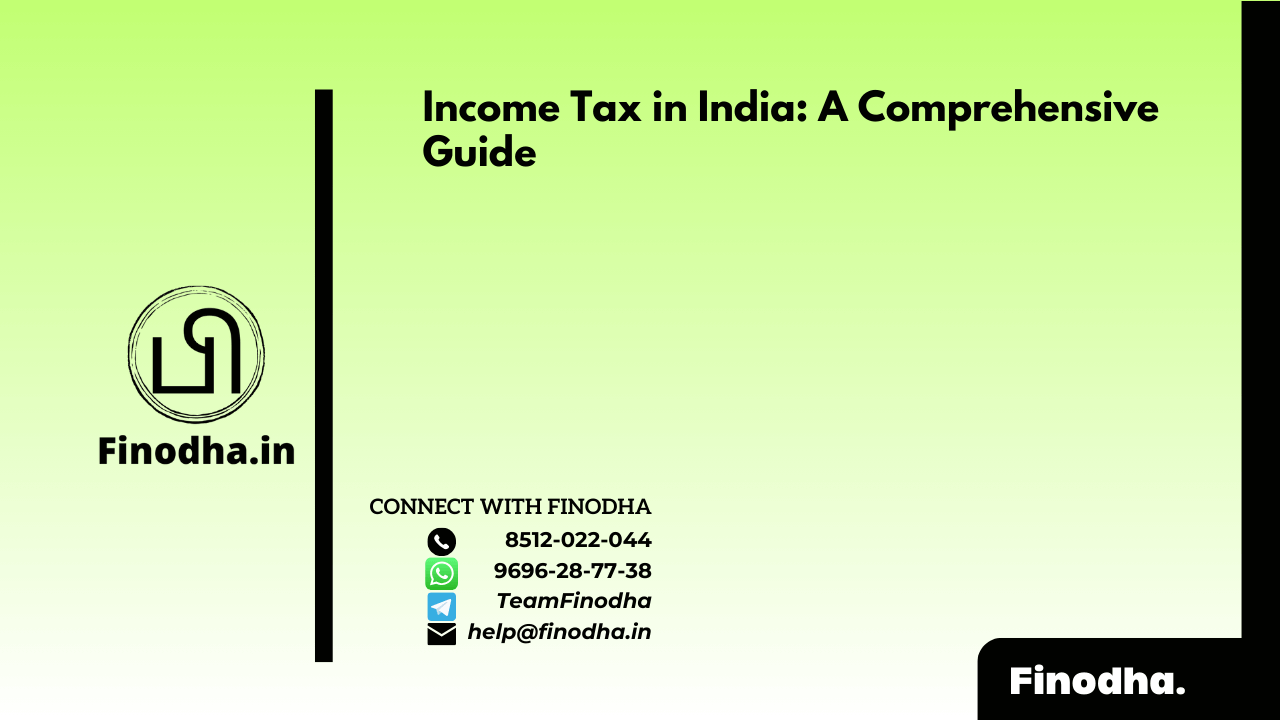Important Keyword: Direct Tax, Income Tax, ITR-1, ITR-2, ITR-3, ITR-4, Taxpayer Categories, TDS.
Table of Contents
ITR: What is Income Tax?
Income Tax serves as a primary source of revenue for the government, aiding in various developmental initiatives such as infrastructure projects and public service salaries. It falls under the category of direct taxes, along with capital gains tax and securities transaction tax. Tax Deducted at Source (TDS) is a mechanism employed by the government to ensure a consistent inflow of revenue by levying taxes directly at the source, such as salaries or other payments.
Every individual, Hindu Undivided Family (HUF), Association of Persons (AOP), Body of Individuals (BOI), firms, and companies are liable to pay Income Tax based on their income earned during the financial year. This tax is calculated as per the applicable tax rates and slabs determined by the government. Through the efficient collection of Income Tax and TDS, the government can effectively manage public finances and fund various developmental endeavors essential for societal progress.
Income Tax in India
In India, the realm of direct taxation operates under the provisions of the Income Tax Act of 1961, complemented by the Income Tax Rules of 1962, as well as notifications and circulars issued by the Central Board of Direct Taxes (CBDT). Income Tax is imposed according to various income categories and taxpayer classifications, delineated within the Income Tax Act.
Taxpayers in India fall under several categories:
- Individual residents aged below 60 years.
- Senior citizens aged between 60 to 80 years.
- Super senior citizens aged above 80 years.
- Non-residents (NRI).
- Hindu Undivided Family (HUF).
- Firms / AOP (Association of Persons) / BOI (Body of Individuals) / Local Authorities / Co-operative Societies.
- Companies.
Income Tax for Resident Individuals
For resident individuals, income is parsed into different categories such as salary, house property, capital gains, business or profession, and other sources. Taxes are applied at slab rates, although there are exceptions for certain types of income.
- Most individuals primarily derive income from salary, house property, and interest, rendering them eligible to file ITR-1 (SAHAJ).
- If income emanates from multiple house properties, ITR-2 is applicable.
- Individuals with capital gains, such as from casual stock trading or property sales, can file ITR-3.
- Those with income from proprietary business or profession may choose between ITR-4 (SUGAM) or ITR-3.
- Individuals who are partners in a firm and receive income via salary, remuneration, interest, or profit-sharing file ITR-3.
- Individuals with proprietary business turnovers exceeding Rs. 2 crores or professionals with gross professional receipts surpassing Rs. 50 lakhs are required to have their books of account audited and file ITR-3.
Income Tax for NRI
For Non-Resident Indians (NRIs), the obligation to file an income tax return in India arises only if they have earned income within the country. Their foreign income from their country of residence does not need to be disclosed while filing the Indian tax return.
The types of return forms applicable to NRIs are the same as those for resident Indians. When filing their return, NRIs can claim credit if the income earned in India is also taxed in their country of residence. The fundamental principle is to prevent double taxation on the same income. Therefore, if income earned in India is also taxed in a foreign country with which India has a double taxation avoidance agreement, NRIs can claim credit for the tax paid in the foreign country while filing their Indian return.

Income Tax for HUF (Hindu Undivided Family)
The Income Tax Act recognizes Hindu Undivided Family (HUF) as a distinct legal entity apart from its members, with its own unique PAN. HUFs enjoy a basic exemption limit similar to that of individuals, set at Rs. 2,50,000.
Key points regarding HUF taxation:
- HUFs are required to file their Income Tax Return separately.
- All incomes derived from assets in the common pool of the HUF or from business activities conducted in the name of the HUF must be included in the tax return.
- HUFs can earn income from various sources, excluding salary.
- Income is taxed at slab rates applicable to individuals.
- HUFs can file returns using ITR-2, ITR-3, and ITR-4 forms.
- Similar to individuals, if an HUF is engaged in business and its turnover exceeds Rs. 2 crores, the books of account must be audited, and ITR-4 is to be filed.
Income Tax for Partnership Firms
- Partnership firms and Limited Liability Partnerships (LLPs) are distinct legal entities with their own PAN.
- These entities file income tax returns using ITR-5.
- Income from business or profession, house property, capital gains, and other sources can be reported in ITR-5.
- A flat rate of 30% tax applies to the firm’s income.
- Profits distributed among partners, after tax payment, are tax-free in the hands of the partners.
- However, any salary, remuneration, or interest paid to partners is taxable in the hands of the partners, while the firm can claim it as an expense.
Income Tax for Companies
- Companies have separate legal identities and PANs, categorized as Domestic Companies and Foreign Companies.
- Domestic companies file income tax returns using ITR-6.
- It is mandatory for companies to file returns and provide details of statutory audits.
- If the turnover from business exceeds Rs. 2 crores, a Tax Audit is required, with details to be provided in the Income Tax Return.
- Companies can earn income from business, house property, capital gains, and other sources.
- Companies claiming exemptions under section 11 file returns using ITR-7.
- Domestic companies are taxed at a flat rate of 30%, while foreign companies are taxed at a flat rate of 40%
Read More: DSC Management Utility: Generate Signature File to Upload XML
Web Stories: DSC Management Utility: Generate Signature File to Upload XML
Official Income Tax Return filing website: https://incometaxindia.gov.in/




